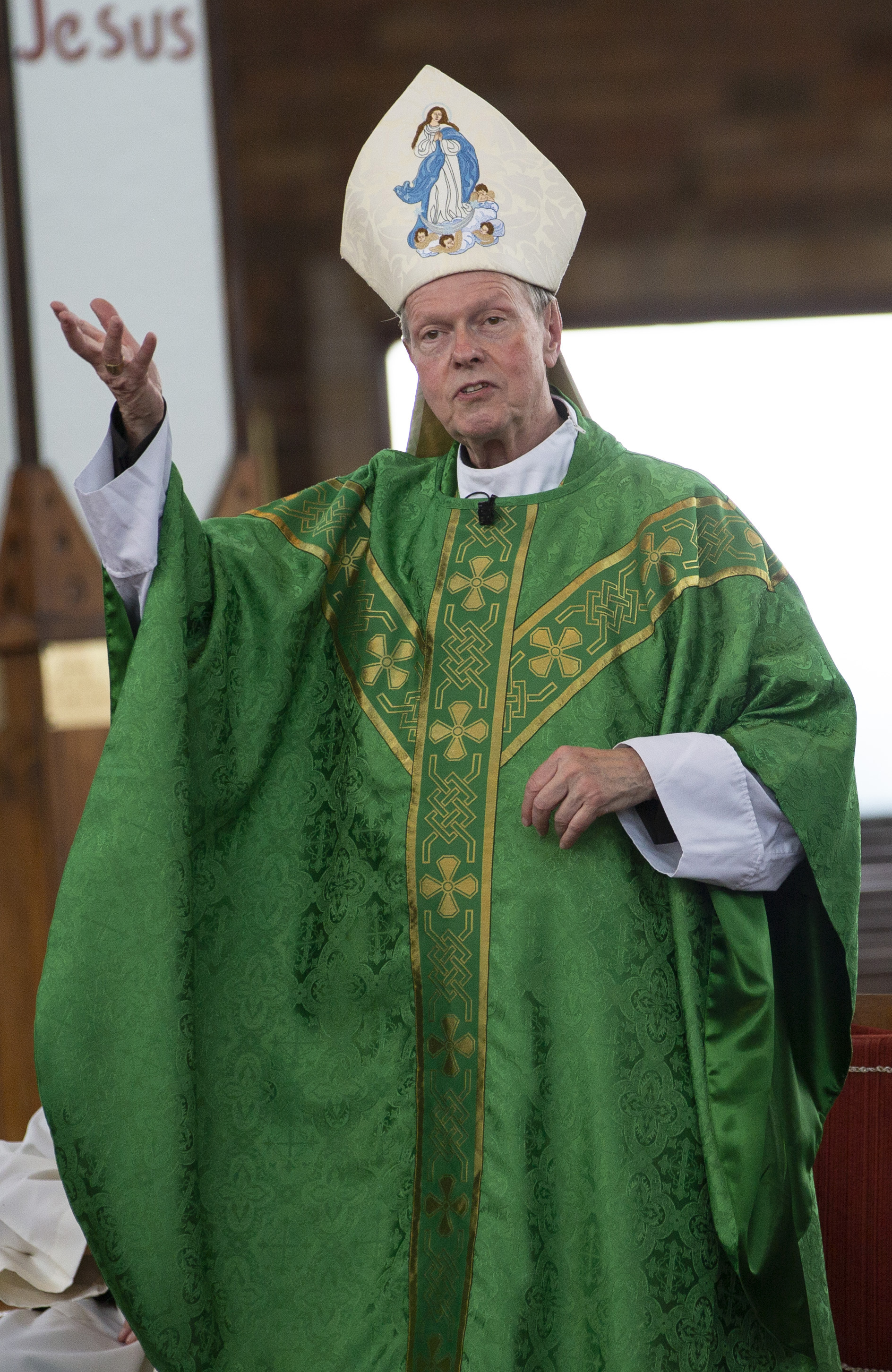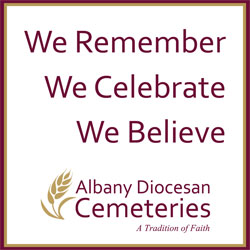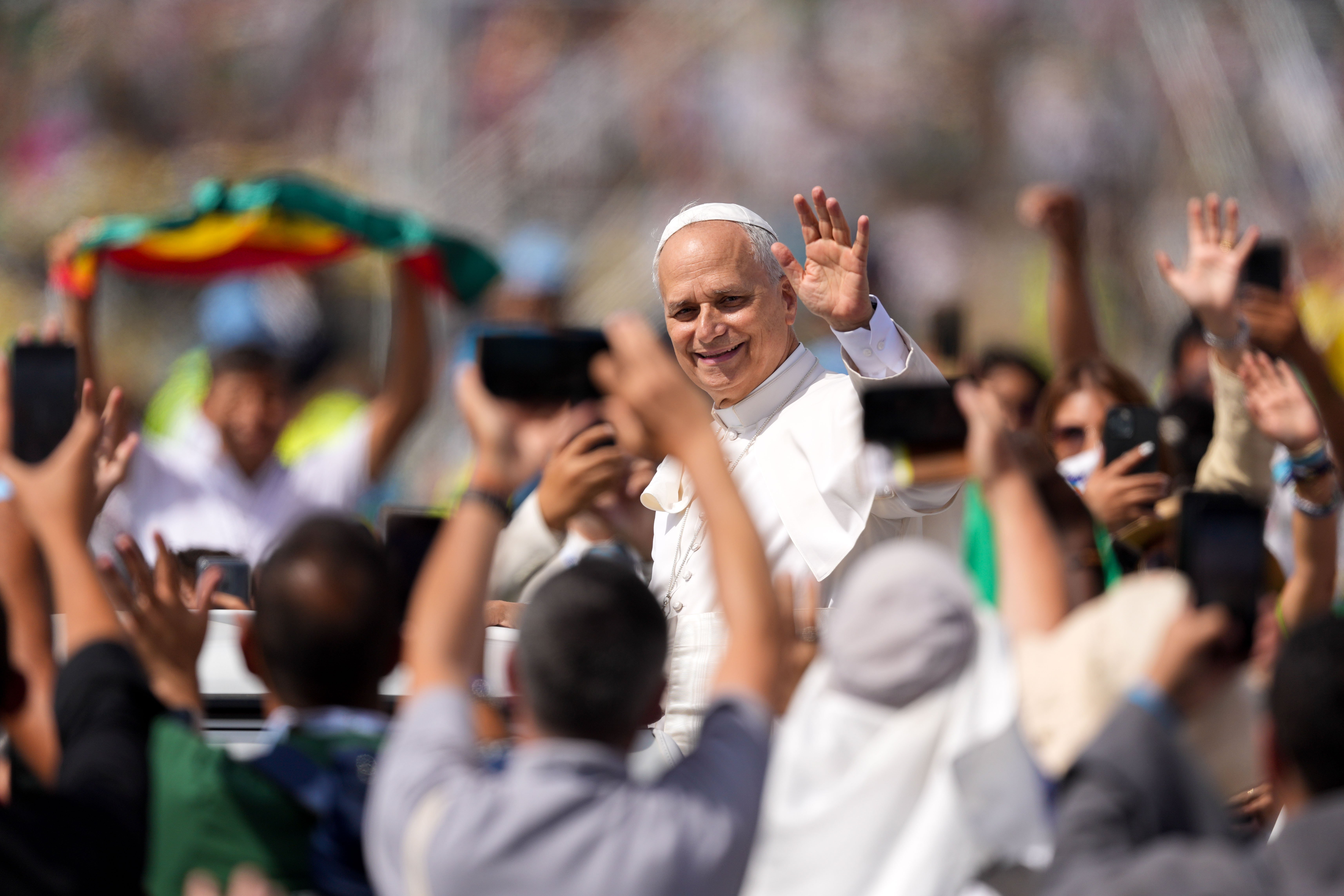April 6, 2018 at 1:53 p.m.
Diary captures life of Catholic in 1892
Christmas morning in 1892 was a Sunday, providing Ed Glavin with two reasons he didn't have to go to his six-day-a-week job at the stockyards run by his relatives in West Albany. Instead, he went to 5 a.m. Mass at St. Francis de Sales Church and sang in the choir. And then he turned around and went to another Mass at 11:30.
For an ordinary Catholic laborer of 100 years ago, Christmastime meant a welcome break from long days of work. But those days included religion, too, as Ed notes in his diary. When he wasn't in church, he was often praying the Rosary or attending other services, including Benediction and vespers.
"Got up at 8," the bachelor in his early 20s wrote in his diary on Dec. 18, 1892, a week before Christmas. "Watered the horses. It's a little cool. Feels very much like snow. Went to 10 o'clock Mass. Sang in the choir. [Gave] 50 cents towards a collection for the Bishop [Francis McNeirny]."
Like many men a century later, Ed's Sunday included church and football. After dinner, he went to vespers and then "went kicking football for an hour." Then, after a game of cards with friends, he was in bed at 10:30.
Back to work
Monday, Dec. 19, meant back to work for Ed, who arose on "a fine frosty morning" at 6:30 and worked till 5 -- in other words, from dawn to dark at a time when artificial lighting was poor if it existed at all.
His job included slaughtering sheep and then separating the wool from their skins. This day, he and a coworker named Johnny "killed 25." That was apparently a slow day; on Saturday, Dec. 17, for example, he killed 15 sheep before lunch and 35 afterwards.
As the week before Christmas continued, Ed recorded many "fine cool" mornings when he woke up between 5:30 and 6:30, went to the "skin factory," as the stockyards were known, and spent the day slaughtering sheep, a job he called "very hard work." The "coldest part" of his labor, he recorded in his diary, was "taking the wool skins out of the pits" where they lay in a solution to ease the separation of the wool.
His evenings were spent in choir rehearsals for Christmas, but he thought they weren't achieving their purpose. "I don't think the singing will be very good for Christmas," he confided to his diary on Dec. 20.
Factory gang
On Dec. 21, Ed returned to work with four others: Thomas Hughes, John Delaney, Frank Clancy and "Mike." The latter two joined Ed that evening for more card games until 10 p.m. To keep warm, "we put up the stove in our room," he noted.
Dec. 22 saw the last choir rehearsal, led by "our organist professor" who is "easily ninety on the first of January," Ed wrote. "He made a very nice little farewell speech."
Two days before Christmas, Ed killed 36 sheep -- and got a Christmas card and "a very nice letter from Ellie Corbett." After taking care of the horses, he wrote his own letter -- to Jack Bolan in Brockton, Mass. -- and posted it at 6 p.m. A friend named John visited -- "awfully drunk" -- and Ed went back to church to "put up the pews for Xmas."
Noel
Christmas Eve in 1892 dawned very cold; the temperature overnight had fallen to 22 degrees below zero. At the factory, Ed reported, "everything was frozen. I got 180 skins out of the pit."
Always attentive to his faith, Ed "came home and dressed, then went to Confession. After, finished putting up the pews. We got through at 9:30. The church looks very nice. Mary Wells & Mary Mebaron [came] in to Confession."
On Christmas day, "a fine cool morn," Ed got up at 4:30 and "went to 5 o'clock Mass, sang in the choir." Despite his earlier worries, he declared that "the singing was very good."
As a favor, he then "drove Mary Wall & Mary Molan out to Loudonville with the team wagon." Then it was back to Mass again, this time for the 11:30 service where "the singing was broken up a little on account of a young Priest. It was his first High Mass & he made some mistakes." Ed stayed for Benediction after Mass and then "went skating. Ice is six inches thick."
That night, he joined all of the choir for dinner at the Ludlaw home. Among the dozen people on hand were Ed Morgan, William Burns, Maurice Gardiner, Ellie Anderson, Mary Quinns, Maurice Clark, "Maggie, Kitty, Annie and Jim."
End of holiday
The next day, Monday, Dec. 26, 1892, was another workday for Ed -- more skins to be taken out of the pit and more gossip from his co-workers. "John F" reported that "Hannie got very fleshy," Ed wrote in his diary.
As the week progressed toward the New Year, Ed's routine continued. He killed lambs in seven-degree weather...shoveled dirt to make the skin pit deeper..."worked in the wool"...played cards with Frank, Mike and Willie...and "drank cider until we got full."
Among the lambs he slaughtered on Dec. 29 was "a pet sheep of Pat Molan's." The animal had been "bit by a dog; he was very fine and weighed 87 pounds."
Year ends
Ed hoped that the new year would mean a new life. He had been thinking of opportunities elsewhere, perhaps in Buffalo or Chicago, where the stockyards were larger and there was more work to be had.
On New Year's Eve, Ed went to the bank and withdrew "$200 & 9.82 cents interest." For 75 cents, he bought a razor strop. Then he returned $150 to another bank. The $50 he kept would bankroll his upcoming trip.
On Jan. 1, 1893, a day when it was "raining awful," Ed went to Mass and listened as "Father [James] Peyton [the founding pastor] spoke very nicely of family and drink." He spent the day visiting friends and then left Albany on the 10:35 p.m. train.
The next day, Ed arrived in Buffalo and "went down to the stockyards," including the New England Slaughterhouse." Apparently, the pay didn't suit him because he bought a $10 ticket for Chicago, re-boarded the train and ate bologna sandwiches as he headed west.
Rest of the story
Ed's western sojourn would not prove to be the opportunity he dreamed of. After a frigid night on the train, he arrived, two hours late, in Chicago, passing by the World's Fair buildings, erected to celebrate the 400th anniversary of the discovery of America. He pronounced the structures "beautiful."
In the Windy City, he got a glimpse of his possibly grim future in the person of Tom Clancy, whom he met "in a saloon. He looks very bad, he has no clothes and is not working. He is sick for some time. He bums around at nights."
Eventually, Ed would seek greener pastures in the stockyards in Kansas City, only to return to Albany by paying his way back as a drover who herded cattle onto and off railway cars. Back home, he eventually became a successful coal dealer on Central Avenue in Albany, one who prayed the Rosary at night and attended Mass every Sunday.
Editor's note:
The Glavin family name is woven like a green thread through the historic tapestry of the Albany Diocese. Priests (including Msgr. John Glavin, whose mission magazine would evolve into The Evangelist), nuns, brothers and laypeople from that clan appear in the annals of the Diocese from the 19th century when the Great Famine in Ireland sent the family across the Atlantic. As the decades passed, Glavins would become monsignors in Rensselaer and Amsterdam, women religious, Christian brothers and advisors to bishops, such as Prof. James Glavin. (For more details about some of them, read "Canals & Crossroads," the Sesquicentennial history of the Albany Diocese; see how you can order a copy.) But like many other Irish immigrants, some Glavins were laborers, businessmen and politicians. One of them was Edward Glavin, who began writing a diary of his daily life, a diary now in the hands of his nephew, Pat Glavin, a member of St. Teresa of Avila parish in Albany. He recently shared some pages of his uncle's diary with The Evangelist. They tell how an ordinary Catholic man of 100 years ago celebrated the holidays and dreamed of a better life.
(12-04-97) [[In-content Ad]]
- Florida bishops once again ask DeSantis for clemency on a scheduled execution
- Ahead of canonization, new statue of Blessed Carlo Acutis unveiled in Assisi
- Christians are called to help world find peace, reconciliation, pope says
- Ministries to DC homeless share concerns about their welfare amid encampment removal
- UPDATE: ‘Cruel hoax’ active shooter alert disrupts Villanova’s opening Mass
- AI ‘resurrections’ raise ethical issues, prolong grief, say Catholic experts
- On the road to Our Lady: How pilgrimage taught me the power of community
- Bishops meet in Colombia to discuss future of church’s Pan-Amazon region
- Blessed Pier Giorgio Frassati shows how to ‘be holy in the normalcy of our lives’
- Federal judge blocks Texas 10 Commandments law from being enforced in some school districts







Comments:
You must login to comment.